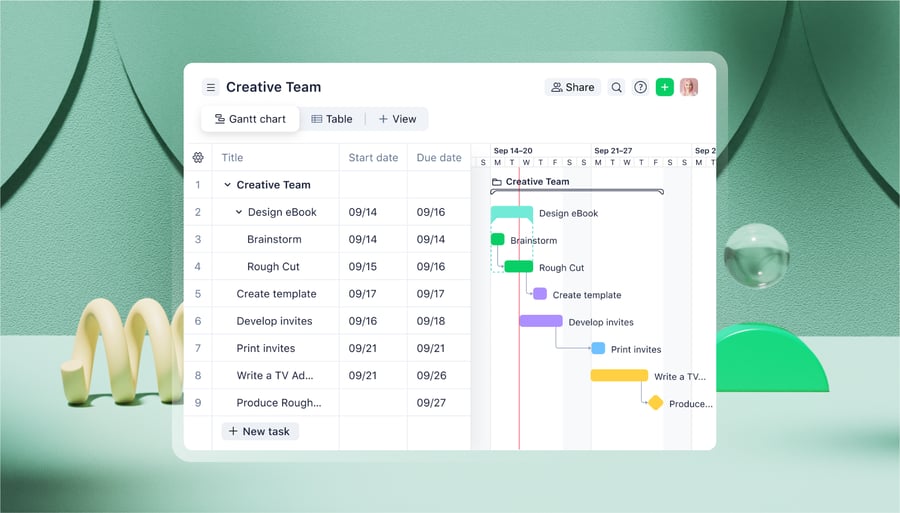
6 key skills marketers should add to their resumes in 2024
There’s no way to sugarcoat some of the top workplace trends of 2023: lower budgets and smaller staff numbers. Tech companies laid off over 100,000 workers over the course of 2023 — and the workers who remained spent much of the year scrambling to cover the gaps left when their colleagues were let go. We were truly in our ‘do more with less’ era: the work had to get accomplished, but the resources were slim. [caption id="attachment_493501" align="alignnone" width="8688"]Photo by M. Monk on Unsplash[/caption] While 2024 hasn’t completely stabilized (Microsoft and Amazon both announced large layoffs in January), many workers have recovered from the shock of the collective losses of 2023 and have begun to look toward the future. For marketers especially, there is a collective need to move beyond the ‘Do more with less’ era and into a more sustainable landscape. That’s why 2024 will likely be a year dedicated to upskilling for many marketers — or at least it should be! Try Wrike for free Why you should continue to pursue new skills There are a few very compelling reasons to learn new skills, especially in a tumultuous job market. Whether you feel your current position may be in jeopardy or not, having new skills can help you protect yourself in the future as well as expand your current horizons and improve job satisfaction. One reason to upskill is that it will make you more valuable as a current employee, potentially helping you avoid layoffs in the future. Employers might look more favorably on someone who is able to offer a broader range of skills than someone who has a more limited skill set. Upskilling could also allow you to move laterally within your company to other roles at a time when the scope for promotions might be on hold. Another reason to pursue upskilling is to ensure that if you are affected by a layoff in the future, you should be able to maximize your job search opportunities with more skills under your belt. CNBC reported that when employees were laid off in 2023, a number of those workers ended up being hired at smaller companies or in adjacent industries: “Some laid-off employees immediately found new jobs at smaller software firms and internet companies or continued their careers outside of tech, pivoting to consulting, health care, finance and other industries eager to recruit top talent who might have otherwise stayed at larger tech companies.” Over a third of laid-off tech workers found positions in software development, internet, and IT firms. Joining a smaller firm often means that you will have broader responsibilities than at a large company. In the hiring process for one of these roles, having a wider range of skills to offer can give you a competitive edge. Finally, upskilling will likely increase your job satisfaction. A study undertaken by Gallup and Amazon found that “nearly three-in-four workers (71%) who have participated in upskilling agree or strongly agree that it has enhanced their satisfaction with work.” If you can increase your current and future employability as well as your job satisfaction at the same time, that’s a win-win situation. Areas marketers should upskill in 2024 Upskilling or even reskilling opportunities are often dependent on your current role and experience, as well as your employer’s flexibility and openness to the process, which may involve using working hours. With those caveats in mind, certain categories of marketing skills will continue to be valuable in the coming years and will most likely benefit marketers who seek out those skills. Here are a few key marketing skills marketers should add to their resumes in 2024: Data analysis and reporting: Reporting and data analysis go hand in hand. Data analysis allows you to better understand the numbers behind what’s working and what’s not, and reporting can help you show your managers and executives how the work your team is undertaking is affecting the company’s bottom line. This course will give you the lowdown on how to analyze key metrics for your marketing campaigns. Social media: Social media is here to stay and many marketing departments that have undergone layoffs have had to say goodbye to their social media staff. Learning new strategies in the social media marketing department can allow your organization to continue to have a presence during a period of slower growth. HubSpot offers a free social media marketing course that would fit the bill in this area. Project management: Most marketers function as project managers as part of their roles, but most don’t have formal project management training. The Project Management Institute offers a selection of free e-learning opportunities that will help you gain a better understanding of how the principles of project management can inform your marketing campaigns, event planning, and more. A/B testing: Figuring out exactly what marketing activities, campaigns, or language works best is critical to effectively using budgets and resources. A/B testing allows you to do just that, drilling down into the effectiveness of particular elements with your audience so you can do more of what’s effective. A course in the basics of A/B testing like this one would give you a sense of how to start designing the most effective A/B testing experiments. Generative AI: Understanding how to use generative AI for your marketing role, no matter what that role is, will continue to be imperative over the coming year. Whether you’re using ChatGPT to draft email cadences to nurture leads or brainstorming keywords, the new AI technology can and should help make your marketing job easier and less time-consuming. This ChatGPT for Beginners course would be a smart place to start. Copywriting: As a copywriter, I might live to regret suggesting all marketers upskill their copywriting but, truth be told, it’s a darn useful skill to have. If you can draft more effective emails to potential leads without the help of your organization’s copywriters (if they have them at all), you’ll be one step ahead of your colleagues. Similarly, if you are applying for a position at a company that doesn’t have copywriters, having strong writing skills can only benefit you in the hiring process. This course in High Impact Business Writing would help you polish your writing skills. Why mastering Wrike can help bolster your 2024 goals In the spirit of continuous learning, Wrike offers a range of courses that will help you improve your Wrike skills, ensuring you’re able to use each and every feature that can impact your team’s success. (Our marketing team recently brushed up on our skills and we can attest it’s a game changer!) While Wrike doesn’t offer general marketing courses, so many of our platform’s features directly enable marketers to use the skills we outlined above. Interested in increasing your analytics and reporting skills in 2024? Wrike’s advanced analytics feature allows you to analyze data and create reports with a few clicks. Trying to improve your copywriting skills this year? Use our integration with Grammarly, which offers full functionality in all tasks and ensures your Wrike work is typo-free. Once you’ve created the foundation for a new campaign using ChatGPT, bring it into Wrike to manage it from start to finish. If you’re itching to get started using Wrike to support new skills, a Wrike free two-week trial is the perfect introduction. Try Wrike for free

Try Wrike Free for 14 Days!
Improve your team's collaboration, enhance work visibility, and so much more.

Get weekly updates in your inbox!

Championing Change: Mike Fank on cutting implementation time by 83%
We’re back with another installment of our Championing Change series, where we learn how real Wrike customers are using our platform in their daily work to reach their goals. Getting Wrike tips and tricks directly from customers is one of the best ways to get the most out of our platform. This time, we’re hearing from Mike Fank, Operational Excellence, Quality, and Safety Manager at Wisconsin Metal Parts (WMP). In operation for over 30 years, WMP is a one-stop shop for metal production. As Mike put it, “We make everything.” The company manufactures the metal parts in bike racks, medical devices, HVAC systems, orthodontics — and just about everything in between. “If it’s made of metal, we’ll gladly work on it,” he said. Recently, Mike became our latest Wrike Black Belt holder, marking his work toward becoming a true Wrike champion. Today, Mike gives us insight into how the company continues to strive for improvement, increase efficiency, and embrace change using Wrike. Using Wrike to implement a continual improvement process “Continual improvement is core to what we do at WMP,” Mike explained. To reach its continuous improvement goals, the company created an employee improvement submission system to “track how many ideas are submitted and how many are implemented”. Starting with one small piece, WMP has grown its continual improvement process using Wrike as the foundation. “Wrike helped automate the approval and routing of ideas. After our initial use case was adopted, we continued to grow what can be put in Wrike,” Mike added. But WMP didn’t just use Wrike to effectively collate employee-submitted ideas, it also integrated its corrective action process by building a custom template in Wrike that ensures each step is completed. Then it added required reviews and approvals at key steps, so management could regularly monitor each submission’s progress. Try Wrike for free In the process of implementing this system, WMP landed on one of our favorite bonuses of using Wrike: the elimination of spreadsheets and emails. As a manufacturing company, WMP can’t keep every element in Wrike but the key initiatives are there, according to Mike. And that alone has allowed the company to drastically cut down on status update emails and cumbersome spreadsheets for its continual improvement program. Anticipating change management issues When we hear about our customers introducing entirely new processes, we know that adjustment can be tricky. Change can be hard! That’s why we’re particularly interested in spreading the word when we hear our customers tout the successful introduction of new Wrike features. Mike explained that WMP’s strategy for change management was to get initial buy-in for building its continual improvement program using Wrike, build said program, and then follow up with those who needed extra assistance. “The key has been follow-ups and one-on-one training for the people who are either skeptical or didn’t understand,” Mike said. The icing on the cake? Being able to show that the program works. “We’ve also been able to show the dramatic improvement Wrike has had on implementing ideas.” As adjustments have been needed to tweak the continual improvement system, Mike said the process has been to “get the team together to understand the problems we’re facing with the current system, and then pilot a revised system in Wrike”. He added that it doesn’t take long for those adjustments to take hold: “So far, when people start using it, they immediately see the improvement.” Being a Wrike go-getter helps implementation While a lot of what Wrike can do is intuitive, there’s so much more the platform can provide when you look a little deeper, take a tutorial, or attend our webinars. Mike really dove in head first, aiming to make sure WMP was getting the absolute maximum from Wrike. “When first launching Wrike, I consumed everything I could. I read everything I could find, asked questions on the How To forum in the Help Center, and looked at all the other use cases,” he said. “I wanted to learn all the things Wrike could do to better help WMP implement it effectively.” And Mike’s diligence on the front end has paid off, both in a smooth Wrike rollout and impressive improvements in efficiency. Leveraging Wrike to augment manufacturing technology Manufacturing organizations have priorities that can be a bit different from other Wrike customers, such as marketing agencies or IT companies. But WMP is a prime example of a manufacturing company using Wrike effectively. Mike explained that WMP began by using Wrike for key initiatives while keeping scheduling, planning, and reporting on physical processes in its ERP system. However, WMP is striving to ensure all possible work moves into Wrike eventually. Mike admitted: “Not all our work is in Wrike. I know the saying is, ‘If it’s not in Wrike, it doesn’t exist’ — we’re not there.” With such effective change management strategies, however, it looks like WMP will be soon. Wrike features boost WMP’s efficiency Thanks to WMP’s employee submission system, the company has been able to cut its backlog by more than half, from 300+ items to 128. Even more impressive? The company was also able to cut its implementation time from more than 30 days to just over five. We just love hearing stories of Wrike significantly saving our customers time and energy. If you’ve been on the fence about introducing Wrike’s work management platform to your company, let Wisconsin Metal Parts serve as an example: change really is worth it. Why not try Wrike for free for two weeks and get a taste of how your processes could improve and evolve with Wrike? Try Wrike for free










